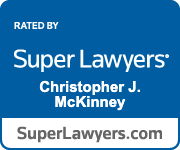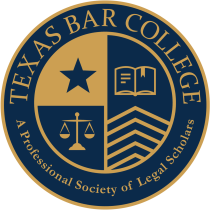What Chevron's Death at SCOTUS Could Mean for Employment Law
/Introduction
The Supreme Court's recent decision to overturn the Chevron deference doctrine marks a pivotal moment in administrative law, with far-reaching implications for various sectors, including employment law. This ruling shifts the power to interpret ambiguous laws from federal agencies to the judiciary, potentially impacting wage and hour regulations, OSHA standards, independent contractor classifications, and other areas relevant to employees and their relationship with their employers.
Understanding Chevron Deference
The Chevron deference doctrine originated from the 1984 case Chevron U.S.A., Inc. v. Natural Resources Defense Council. This landmark decision established a principle that required federal courts to defer to a government agency's interpretation of unclear statutory language, provided the interpretation was reasonable. The case stemmed from a dispute over the Environmental Protection Agency's (EPA) interpretation of the term "stationary source" in the Clean Air Act Amendments of 1977.
The case's background involves a policy shift under the Reagan administration. The EPA adopted a plantwide definition of "source," allowing facilities to avoid strict new-source review requirements if overall emissions didn't increase, even if individual units within the plant did. The Natural Resources Defense Council (NRDC) challenged this interpretation, leading to a legal battle that culminated in the Supreme Court's ruling.
Justice John Paul Stevens, writing for the Court, outlined a two-step framework for judicial review of agency interpretations:
Step One: Determine if Congress has directly addressed the specific issue. If the statute is clear, the agency must follow Congress's unambiguous intent.
Step Two: If the statute is ambiguous, determine whether the agency's interpretation is reasonable.
This framework gave agencies significant leeway in interpreting statutes and implementing policy, acknowledging their expertise in their respective fields. The Court emphasized that judges should not substitute their own interpretations for those of agencies when Congress left ambiguity in the law, recognizing the specialized knowledge and policymaking roles of federal agencies.
The Supreme Court's Decision
In Loper Bright Enterprises v. Raimondo, the Supreme Court ruled 6-3 to eliminate Chevron deference. The majority opinion emphasized that the judiciary, not federal agencies, should take the lead in interpreting statutory ambiguities. The decision stressed that the Administrative Procedure Act requires courts to exercise independent judgment when reviewing agency actions and interpretations, rather than deferring to the agency simply because a statute is unclear.
This decision fundamentally alters the landscape of administrative law. By removing Chevron deference, the Court has placed greater interpretative responsibility on the judiciary, likely leading to increased judicial scrutiny of agency actions. This shift aims to curb potential regulatory overreach by federal agencies and ensure that agencies operate within their statutory authority.
In her dissent, Justice Elena Kagan argued that the Chevron doctrine has been a cornerstone of administrative law for decades, enabling agencies to effectively address gaps and resolve ambiguities in regulatory statutes. She contended that agencies with specialized expertise are better suited for this role than courts, which lack the technical knowledge and policy-making experience necessary for such decisions.
The ruling has significant implications for regulatory bodies such as the Department of Labor (DOL), the Equal Employment Opportunity Commission (EEOC), the National Labor Relations Board (NLRB), and others. Without Chevron deference, these agencies may face more frequent and rigorous judicial challenges to their interpretations and enforcement of regulatory statutes.
Implications for Employment Law
1. Wage and Hour Regulations
The elimination of Chevron deference means courts will no longer automatically uphold DOL regulations interpreting ambiguous statutory language. This could lead to increased judicial scrutiny of wage and hour regulations, such as the criteria for exemptions under the Fair Labor Standards Act (FLSA). Changes to the salary threshold for exemptions, for example, might face more legal challenges, creating uncertainty for both employers and employees.
Employers may find more opportunities to challenge new wage and hour regulations, potentially leading to a more fragmented regulatory environment. Conversely, worker advocacy groups might push for stricter interpretations that favor employee protections.
2. OSHA Standards
The Occupational Safety and Health Administration (OSHA) relies on its interpretative authority to enforce safety standards. Without Chevron deference, courts may take a more active role in reviewing OSHA's rules, potentially leading to increased litigation and less predictability regarding compliance requirements. Employers might face a more fragmented regulatory environment as different courts interpret OSHA's mandates differently.
This increased judicial scrutiny could slow the implementation of new safety regulations, affecting how quickly OSHA can respond to emerging workplace hazards. Employers and workers alike may experience a period of regulatory uncertainty as courts assume a more significant role in interpreting safety standards.
3. Independent Contractor Classification
The classification of workers as employees or independent contractors significantly impacts labor protections. Without Chevron deference, courts will independently interpret the FLSA's definitions, possibly resulting in inconsistent rulings. This could create a patchwork of standards across different jurisdictions, complicating compliance for businesses operating in multiple states.
The uncertainty surrounding worker classification could affect gig economy companies and other businesses that rely heavily on independent contractors. Varied judicial interpretations could lead to inconsistent enforcement across states, making it challenging for companies to maintain uniform labor practices.
4. Employer Regulatory Burden
The end of Chevron deference will likely result in increased litigation as businesses, workers, and advocacy groups challenge agency regulations. Employers may contest new regulations more frequently, arguing that they represent unreasonable interpretations of ambiguous statutes. Worker advocacy groups might push for interpretations that favor employee protections, leading to a more contentious regulatory environment.
Employers should prepare for potential increases in legal costs associated with challenging and complying with new regulations. This increased litigation burden could slow the implementation of new policies and create a more adversarial regulatory environment.
5. Agency Rulemaking
Agencies like the DOL, OSHA, and the EEOC might become more cautious in their rulemaking processes. They may draft narrower rules that closely adhere to statutory language to reduce the likelihood of successful challenges. This could result in a slower, more deliberate regulatory process and potentially less robust protections for workers.
Agencies may also seek more explicit guidance from Congress to strengthen the legal foundation of their rules. This shift could lead to a more collaborative relationship between agencies and legislators, but it might also slow the pace of regulatory change.
6. Harassment and Discrimination
The Equal Employment Opportunity Commission (EEOC) enforces federal laws prohibiting employment discrimination. Without Chevron deference, EEOC guidelines and rules on harassment and discrimination may face increased judicial scrutiny. Employers might argue that certain EEOC guidelines exceed statutory authority, leading to more frequent court cases and potentially less consistency in the enforcement of anti-discrimination protections.
The removal of Chevron deference could make it more challenging for the EEOC to adapt its interpretations to address new forms of workplace discrimination and harassment. For instance, evolving issues such as cyber harassment or discrimination based on emerging gender identities might require the EEOC to provide more detailed justifications for their interpretations, potentially slowing down the implementation of new protections.
7. Noncompetition Agreements
Noncompetition agreements are contracts that restrict employees from working with competitors or starting similar businesses for a certain period after leaving a company. The interpretation and enforcement of these agreements vary significantly across jurisdictions. Without Chevron deference, courts will independently assess the reasonableness of such agreements, potentially leading to a wider variety of rulings.
Employers may face more uncertainty regarding the enforceability of noncompetition agreements, as different courts may reach different conclusions based on similar facts. This could complicate matters for companies operating in multiple states and trying to maintain consistent policies. Increased judicial scrutiny may also lead to a rise in challenges to noncompetition agreements, potentially limiting their use and effectiveness.
8. Pay Equity
Efforts to address pay equity involve ensuring that employees receive equal pay for equal work, regardless of gender, race, or other protected characteristics. Agencies tasked with enforcing pay equity laws may need to provide more detailed justifications for their interpretations without Chevron deference. This could result in increased judicial scrutiny and potentially slower progress on closing the gender pay gap.
The removal of Chevron deference may also lead to more varied interpretations of pay equity laws across different jurisdictions. Employers may face challenges in maintaining consistent pay practices, and workers might experience disparities in how pay equity protections are enforced. Advocacy groups pushing for stronger pay equity measures may encounter more obstacles as they navigate a more fragmented legal landscape.
Potential Challenges and Litigation
The end of Chevron deference is likely to result in increased litigation as businesses, workers, and advocacy groups challenge agency regulations. Employers may contest new regulations more frequently, arguing that they represent unreasonable interpretations of ambiguous statutes. Conversely, worker advocacy groups might push for interpretations that favor employee protections, leading to a more contentious regulatory environment.
Lawyers who represent business suggest that this ruling could significantly empower employers to fight against perceived regulatory overreach. This shift means that regulatory bodies will need to be more precise in their rulemaking to withstand judicial scrutiny, potentially leading to a more rigorous and transparent regulatory process.
Conclusion
The Supreme Court's decision to end Chevron deference marks a significant shift in the balance of power between federal agencies and the judiciary. For employment law, this change means increased judicial oversight of agency regulations and potentially more legal challenges to wage and hour rules, OSHA standards, and other workplace regulations. As the legal landscape evolves, both employers and employees will need to stay informed about how these changes may affect their rights and responsibilities in the workplace. The coming years will likely see a period of legal turmoil as courts, agencies, and stakeholders navigate this new regulatory environment.
Read More
Chevron U.S.A., Inc. v. Natural Resources Defense Council, Inc. - Wikipedia - Wikipedia
Chevron U.S.A., Inc. v. National Resources Defense Council, Inc. Supreme Court, Chevron Doctrine, Chevron Deference, Loper Bright Enterprises v. Raimondo, & Facts | Britannica - Britannica
Chevron U.S.A., Inc. v. NRDC :: 467 U.S. 837 (1984) :: Justia US Supreme Court Center - Justia
CHEVRON, U.S.A., INC., Petitioner, v. NATURAL RESOURCES DEFENSE COUNCIL, INC., et al. - Legal Information Institute
Chevron U.S.A., Inc. v. National Resources Defense Council, Inc. - Oyez
Understanding Chevron’s Death - Reason
SCOTUS overturns Chevron deference: What does it mean for OSHA? - Safety+Health
The Supreme Court Ends Chevron Deference—What Now? - NRDC
Go Fish! U.S. Supreme Court Overturns ‘Chevron Deference’ To Federal Agencies: What It Means For Employers - Mondaq
Overturning 40 Years of Precedent, SCOTUS Moves on from Chevron - WorkersCompensation.com
Hi, Ho the Witch is (not necessarily) Dead—Will the Death of Chevron Deference Change Wage and Hour Law? - AWR Counsel
The Death of Chevron: The Next Step in Remaking Administrative Law? - Taft Stettinius & Hollister LLP
Freedom and a Funeral for Chevron Deference - AIER
U.S. Supreme Court Overturns Chevron: What It Means for Employers - HR Watchdog
SCOTUS overturns Chevron doctrine, limiting federal agency reach - HR Dive










